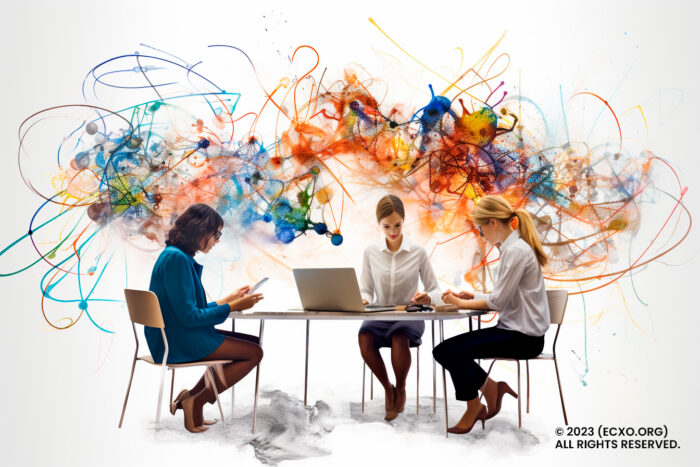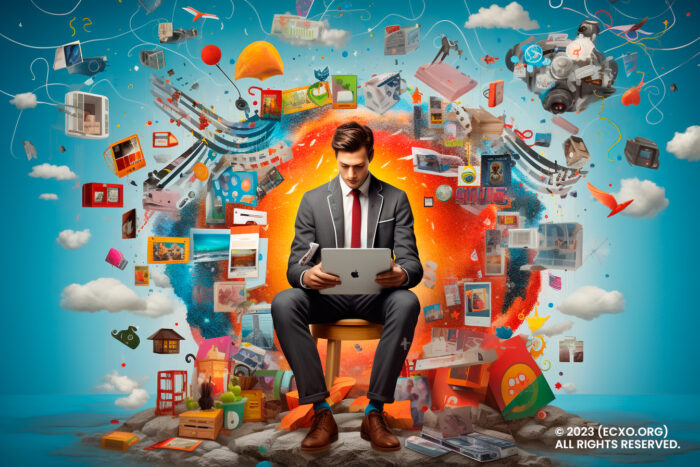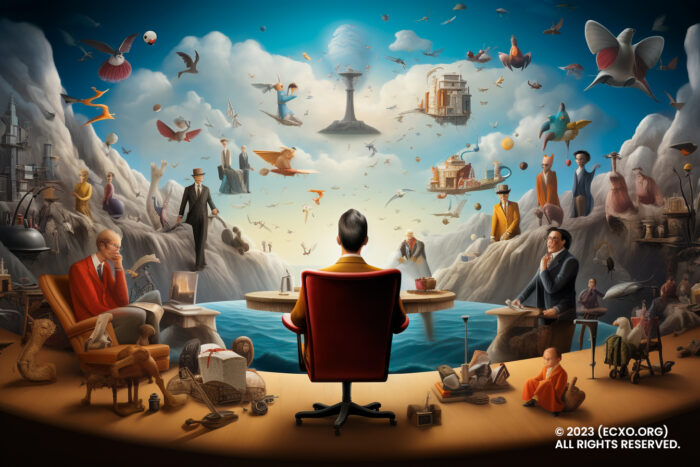
Republished by author from: https://www.eglobalis.com/how-to-boost-customer-loyalty-in-a-tough-economy/.
Economic forecasts are subdued for 2024. There are some shards of light. But, uncertainty remains high in Americas, Europe, the UK and beyond. B2B leaders know their continued resilience, and recovery from the shocks of the past few years, is rooted in their customers.
Everybody knows the impact of downturns are uneven. But customer loyalty, whichever sector you work in, has never been more fluid. Wunderman Thompson’s 2023 B2B Future Shopper report found that 62% of global buyers said that the rising costs of inflation and the cost-of-living crisis made them more inclined to switch suppliers. There’s plenty you can do now to protect your base, build stronger relationships and increase lifetime value.
What can we learn from previous downturns?

Study after study has found that there were striking similarities among brands that flourished in the years coming out of a downturn (about 1 in 10 companies, according to HBR). They were prepared. They were proactive not defensive. They didn’t slash budgets. Truly customer-centric brands stay invested, agile and innovative to meet customer needs. Customer needs in the context of recession, and for the future. They know trying to win customers back is an expensive and risky strategy. With this in mind, let’s take a look at some key areas where you take action to shore up your loyalty strategy.
How to boost customer loyalty
Forget satisfaction. Focus on effort and the way it creates, or diminishes, customer value. Customer satisfaction is not a driver / indicator of loyalty. I’ve talked a lot about this. It’s just a temperature check in the moment. Happy customers are also happy to switch if a better offer comes along. Blink and you’ll miss the impact that delighting customers has on loyalty and repeat business. Focus on reducing effort. But, just making things easy is too shallow. You need to create a link between effort and value.
Blink and you’ll miss the impact delighting customers has on loyalty and repeat business. Customers understand they’ve got to put in some effort – but is it worthwhile or annoying? CX leaders embrace design thinking to work out how to enhance their CX (and develop products, services and processes) – in a way that creates value for customers. And keeps them away from your competitors.
Empathise with your customers
Understand where effort comes from. Frame the customer journey through their eyes, as we all use to say. What do they go through? What are their pain points, and needs – met and unmet? Start by giving your customers the microphone.
(a) Look for an AI-powered Voice of the Customer platform – leverage real-time customer insight (on the information customers are prepared to share about their desires, intents, plans and what’s going on in their business). 62% of customer service specialists said that AI / automation tools help them understand their customers better, according to HubSpot.
Let’s think about SaaS for a moment. 40% of SaaS spending is now driven by individual buyers or small teams who are buying tools tailored to their specific needs, according to the recent SaaS spend report from CloudEagle. Are you agile enough to meet those immediate, and future needs? AI-powered feedback analytics can give you the insights you need. It’s possible to embed your VoC data into your customer data platform which surfaces contextual, and predictive, insights on current and historic behaviour.
(b) Close the insight gap on usage / adoption – most customers who are unhappy just silently switch. How many of your customers have stopped using your products or are at risk or churning? Some recent research suggests the answer may be more than you think. Marketing, sales, and customer success teams have the highest number of unused apps within a year of purchase, CloudEagle found. The reason? Switching to new tools as their needs changed.

- Are you analysing your own usage data?
- Do your teams have access to adoption metrics – this can alert you to risks of churn or issues with renewal?
- Does your customer success team schedule regular check-ins?
- Do you keep your listening mode open beyond the sale?
- Do you have an onboarding plan for new features?
- Do you incentivize the adoption of new features?
A lack of adoption is an incurred cost. Many CFOs are looking to cut costs as they mandate significant reductions in software spending. The CloudEagle research puts the figure at between 10 to 30%. It takes time for users to learn how to get the best from a solution, but are you losing customers because your solution doesn’t meet their continuing needs. A need that is getting more granular?
Reduce / eliminate unnecessary complexities
Right now, digital experiences / buying online are major sources of friction. By their own admission, just under half of B2B tech brands (42%) said their digital experiences “sometimes lags our customer needs”, according to Adobe. Customers are feeling the pain. Just over half of B2B buyers (51%) in the Wunderman Thompson research said sellers don’t understand the friction points in the current online buying process and 45% felt it’s more complicated than making offline purchases. (See 6 for more information on omnichannel). When was the last time you mapped your customers’ digital journeys? Think about how you frame effort / necessary complexities at key touchpoints.
- Remove unnecessary steps and streamline processes
- Minimise cognitive loads through uncluttered design
- Offer a single user password across your sites and apps
- Do you have customer support options in your self-serve portals?
- Think beyond obvious solutions
How can you design things differently to reduce effort / or create more value when effort is required? Ideate, build a prototype to make your idea tangible and test to learn from feedback.

Revisit your omnichannel numbers
Can your business offer an omnichannel experience via self-serve, remote and in-person interactions? If the answer is no, you risk losing customers who are prepared to switch to rivals who offer a superior omnichannel experience. You’ll probably already know that the bar is set at 10 channels and rising.
Which countries have the lowest omnichannel adoption rates?
Most markets embrace omnichannel. But, there is still a lot of work to do in some countries to improve the effectiveness of sales models. McKinsey’s B2B Pulse (2022) found that France and Japan were the outliers with low levels of omnichannel adoption and the most ineffective sales models. Germany, the UK and Italy completed the bottom five. The five leaders at the other end of the spectrum were Brazil, then China, India, the US and Chile, which sits in fifth spot.
B2B customers told McKinsey they have 5 core needs – how are you doing on each of these?
- A consistent experience as customers criss-cross channels – easy said then done but possible.
- A performance guarantee
- Real-time support and real solutions for customers
- Online product availability
- An ability to purchase on any channel
Are your customers able to buy your products and services including mobile, marketplaces and social media? Are you able to meet them on their preferred channels with information and support? Find out more here.
One last thought … do your customers find personalised offers via loyalty programmes worth the effort?
Consumers want personalisation. The world knows this. But are the personalised offers customers receive via loyalty programmes worth the effort? KPMG has found that only 20% of consumers see personalisation as a benefit of loyalty programmes. There is nuance regionally too. The value that consumers place on personalisation varies from country to country. While the Italians (20%), French (16%), Belgians (15%) and Spanish are the most the most receptive to personalised offers, Germans are the least likely, and quid pro quo, most likely (28%) to be put off by behaviour tracking. This aversion is also particularly high in mainland China (23%), Hong Kong (29%), Canada, and the UK (both at 20%). What steps are you taking to assure sceptical customers in different regions that the reward is worth the effort?
That’s a lot to think about about for now. Thank you for reading. I hope you have found these tips helpful.
Sources
Software Spend Analysis Reveals Cost Optimisation Trends in 2023
Software Spend Analysis Reveals Cost Optimisation Trends in 2023
Companies have cut software spend up to 30% as it hits $3500 per employee, finds CloudEagle
https://www.cloudeagle.ai/news/cloudeagle-featured-on-techcrunch
The truth about customer loyalty
https://kpmg.com/xx/en/home/insights/2019/11/customer-loyalty-survey.html
Here’s What Really Builds Customer Loyalty in the B2B Industry
https://www.entrepreneur.com/growing-a-business/heres-what-really-builds-customer-loyalty-in-the-b2b/439430
The B2B Future Shopper Report 2021
https://www.wundermanthompson.com/insight/the-b2b-future-shopper-report-2021
The new B2B growth equation
https://www.mckinsey.com/capabilities/growth-marketing-and-sales/our-insights/the-new-b2b-growth-equation
How to Survive a Recession and Thrive Afterward
https://hbr.org/2019/05/how-to-survive-a-recession-and-thrive-afterward
The B2B buying process has changed, has your sales strategy?
https://www.gartner.com/en/sales/insights/b2b-buying-journey
State of AI in Service
https://blog.hubspot.com/service/state-of-ai-in-service
2023 Digital Trend – B2B High-Tech in Focus
https://business.adobe.com/uk/resources/reports/high-tech-digital-trends.html
3 Essentials for Building a Loyal Customer Base
https://www.entrepreneur.com/growing-a-business/3-essentials-for-building-a-loyal-customer-base/326551



